Icy Inverts Cruise 2013 - Shipboard Blog - Jan 26th to Jan 29th
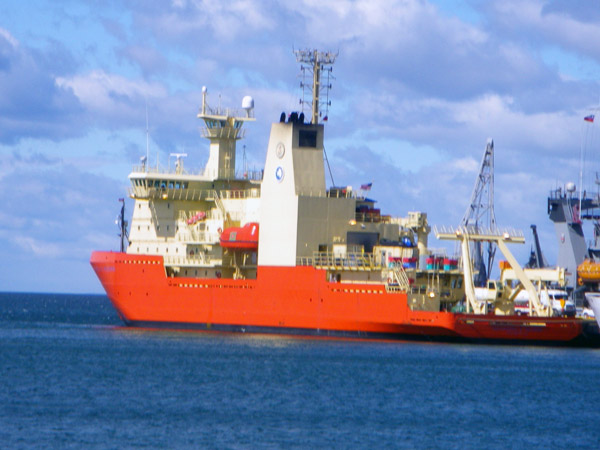
29 January 2013: Northeast of the Ross Sea (72o 51.3`S, 170o 06.9`W)
With the Wrights Sea behind us, we have a couple of days to catch up on some much needed rest, begin packing and preparing samples for the long trip home and making preparations for one last week of intensive sampling as we head toward the Ross Sea and McMurdo Station. While many people have discussed the amazing scenery and wildlife and the incredible organismal diversity of the Antarctic, little has been said of the ship.
The R/V Nathaniel B. Palmer (above picture), named after an adventurous sealer and whaler, sea captain and ship designer and builder, is an Antarctic research vessel/ice breaker built in 1992 in Larose, LA by the North American Shipbuilding Company. With a length of 308 feet (93.9 m) and width of 60 feet (18.3 m), the Palmer can accommodate approximately 70 people. The ship is powered by 4 Caterpillar diesel engines, providing 12,720 horsepower to drive 2 very large propellers. Each propeller is over 13 feet (4m) in diameter!! Typically, in open water, we run on only 2 of the 4 engines, averaging 10 knots per hour. Even only running two engines, the Palmer burns nearly 7,000 gallons of fuel a day in open water. Lucky for us, the gas tank holds 425,000 gallons of fuel. The ship weighs almost 5,000 tons and has more than 3,000 steel plates, each 10 feet by 40 feet, being used to build the ship. Unlike most ships, the steel used to construct the bow of the Palmer is over an inch and a half thick and twice as strong as regular steel. Given the reinforced bow, the Palmer can break ice up to 3 feet thick while moving at a speed of 3 knots. This has provided us the opportunity to sample sites previously inaccessible.
Although we have a relatively small science group, the Palmer can accommodate ~40 researchers, including scientist working in such fields as Marine Biology, Physical and Chemical Oceanography, Marine Geology and Geophysics, Ice Physics and Meteorology. While fitting so many people into a ship only 300 feet long may sound like it would be cramped, with the 7 research laboratories, 2 entertainment lounges, helicopter hanger, a large conference room, weight room and galley there in plenty of room for everyone to have their own space (below picture). In fact, at times, the ship can be eerily quiet and deserted. For our research purposes, the science laboratories we utilize ONLY include the 2 electronics labs (used for sonar and ship navigation systems, computers and equipment maintenance), the 2 dry labs (used for specimen sorting and processing), a wet lab (used for more processing and Christoph’s photography), and the aquarium room (used for keeping live specimens). When we are not collecting, sorting and processing organisms, we can typically be found either in our births catching up on some much needed rest or "refueling" in the galley.
Contributed by: Dr. David A. Weese, Postdoctoral Researcher, University of Michigan
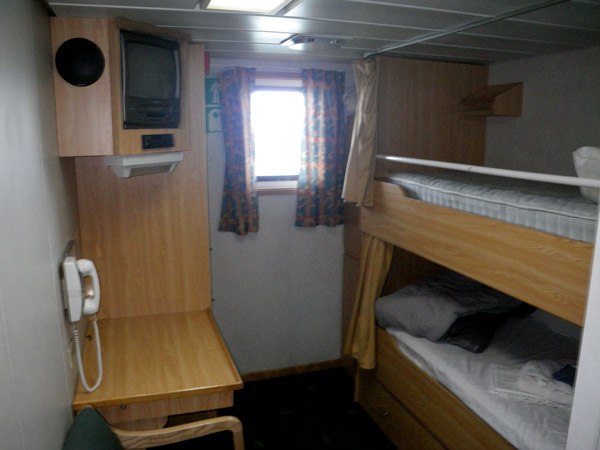
***************************************************************************************
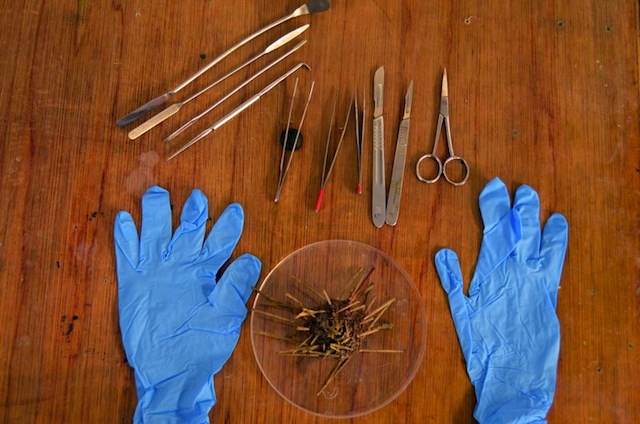
28 January 2013: Northeast of the Ross Sea (72o 10.1`S, 160o 06.6`W)
Greetings from the R/V Nathaniel B. Palmer and the Southern Ocean. As many of you may already know, we are transiting to our next location which is the Ross Sea. These transit days give us a little time to catch up on some necessities: re-securing the lab, starting the packing process, and sleep, of course. For me, these transit days offer a great time to catch up on my work for the McClintock Lab at the University of Alabama, Birmingham (UAB). In an earlier blog, I wrote what my goals were for this cruise. In short, I wanted to collect invertebrates with calcified parts and look at the mineral composition of those parts. Today, I’d like to explain just how I am achieving that goal.
When our trawls come up on deck, we rough sort the animals and start bringing them inside. Once inside they are further classified (to the best of our ability), photographed, and entered into “the book.” At this point, I am able to collect those species which are useful for my work and came up in enough numbers to spare. Typically, I will share some sort of tissue (arm clipping or gonads) with the other scientists so DNA can be analyzed from those samples. I am then off across the hall to dissect my collections. The dissection is necessary as it removes tissue that I do not need and speeds up processes later down the line. When I have the animal and all my tools lined up, I feel like someone needs to be in the background saying “we are ready for you doctor” (above picture). Once dissected, the animals are put into a drying oven to remove excess moisture from the remaining parts. The final step, and most important, is placing the specimen into a dilute bleach mixture to digest. The bleach removes any remaining tissue but leaves the calcified parts unharmed. The calcified parts with which I am left differ between each organism. In urchins, I am left with a feeding apparatus (the Aristotle’s Lantern), a teste (which many would call a shell), and spines. Sea stars and brittle stars, however, look nothing like the animals we picture once they are digested. Being invertebrates, they have no true skeleton. I am not left with calcified parts in the shape of a star, like a vertebrate skeleton. I am left with a large collection of ossicles. The shapes of these vary from one species to the next. It is these remaining calcified parts that I will pack up and take back to UAB for further analysis.
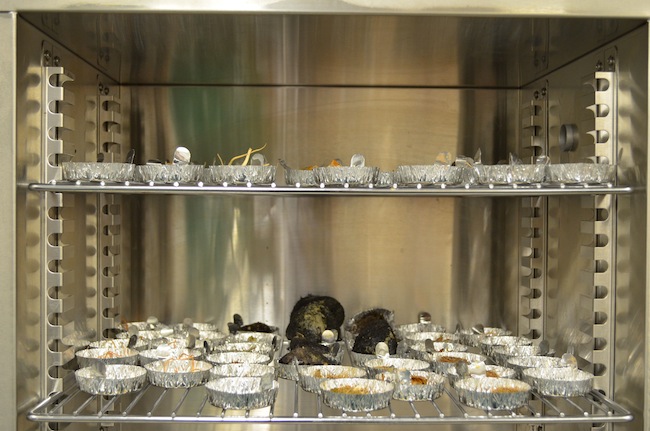
In short, the transit days provide a little extra time to run the digests (the amount of time needed in the bleach depends on the organism) without backlogging the drying oven with more incoming specimen (above picture). Better yet, the transit days give us more time to sight see and relax with our colleagues. This trip has provided the opportunity for me to grow as a scientist and an individual. I have become friends with people by whom I would have been terribly intimidated at scientific conferences because of their knowledge and experience. Instead, I am now joking with them and picking their brains without reservation. The scenery is amazing, but the friendships and networks developed inside the ship are the most priceless things with which I will return home. Best wishes to all those at home (below picture).
Contributed by: Ashley Duquette, Ph.D. Candidate, University of Alabama at Birmingham
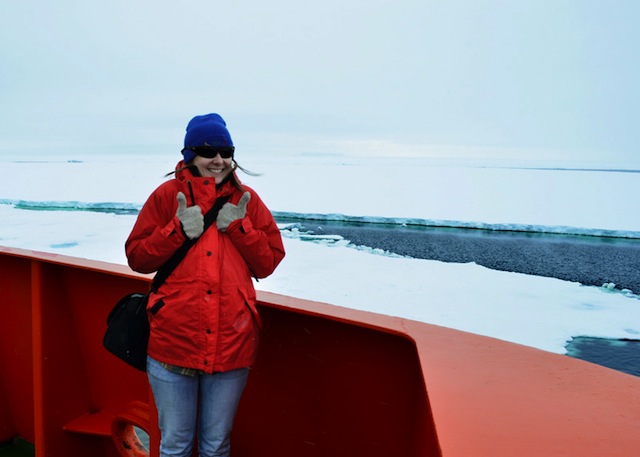
***************************************************************************************
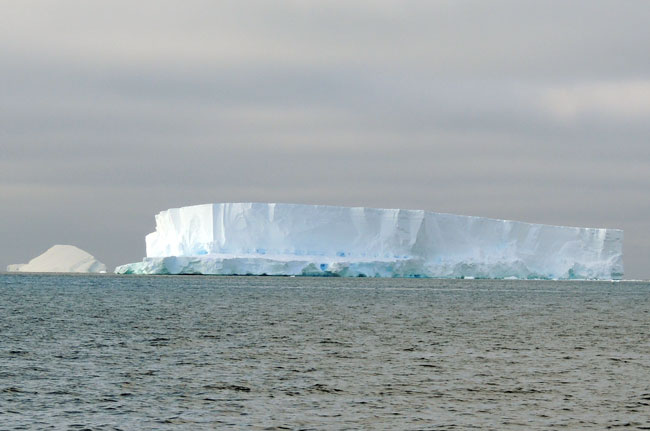
27 January 2013: In transit to the Ross Sea (72o 15.9`S, 137o 44.6`W)
I've long anticipated what this research cruise would have in store for me. Obviously I was excited to see typical “wonders of the world” like the Straights of Magellan, wild penguins, giant icebergs (above picture), and the continent of Antarctica. But as a self-proclaimed nerd, I was most excited to see what kinds of organisms we would capture in our nets. Before this experience I had only seen brittle stars, sea spiders, sea stars, and sea urchins (below picture) in my zoology textbook. Now I find myself holding handfuls of brittle stars each trawl. Better yet, I get to look through many different species as well and learn about their differences from some of the more experienced scientists. The ocean floor seems to be far more diverse than I ever imagined, and it's very exciting to see so many different organisms. I'm learning a lot of their names fairly quickly, but I still have so much to learn. I'm mostly getting familiar with the common organisms that we catch; but it seems like I learn about new organisms every day.

When the trawl is lifted out of the water everyone gets very excited to immediately get to the large mass of organisms and sort them out to make processing them in the lab more efficient. However, I have found that cleaning the net of organisms is another just as important task, and it's very fun too! Cleaning the net doesn't sound very glamorous, but it's actually a great opportunity to find additional organisms that don't make it into the initial pile. Every time I clean the net I find brittle stars, sea spiders, and other organisms that hang on to the net. The net is pretty large, and gets slightly heavier when it's wet. One way to clean the net is by going through it and picking out organisms with forceps (below picture). The other way (which in my opinion is the most fun) is by having the marine techs lift the Blake trawl back up with the crane, after it's open, and literally get inside the net and grab the organisms that are still on the net. The latter technique is very efficient, and saves a lot of time that would be spent flipping through the net. Overall, I would say that cleaning through the net has been a very rewarding experience, filled with good finds and good times.
Contributed by: Carlos Coronado, Undergraduate Student Researcher, Central Michigan University

***************************************************************************************
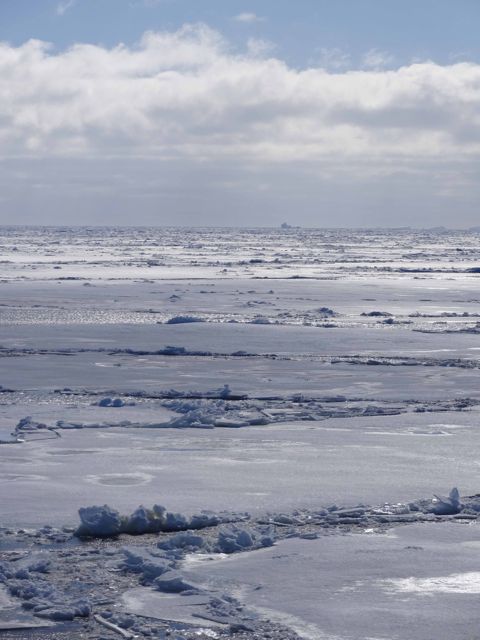
26 January 2013: Leaving Wrights Gulf (72° 21.4’S, 131° 26.2’W)
Descriptions and images cannot capture the magnitude of the place (above picture); Antarctica is simply and irresistibly beautiful. When I’m not working in the lab I am drawn to the bow to take in the environment and marvel that this untouched, quiet place in the world exists. Today, we turned back North and are breaking our way out of the ice, leaving behind one of the most remote places on earth, this time as the first scientists to have collected and identified invertebrate fauna of the Western Amundsen Sea.
Below the contrast of ice, sky and sea are many new and strange species that we bring up in our nets to study (below picture). To me, this is like Christmas morning, and like a kid, I can’t sleep in anticipation of the next station. Discovering new species is the most thrilling aspect of my work. In a world full of cities, planes, trains and automobiles, it’s a wonder there is anything left to discover, yet here we are, fortunate to be doing exactly that. And this is something many people do not realize, that we still discover new species, sometimes even in major metropolitan areas, so the far reaches of the world remain hidden treasures of fascinating creatures to be uncovered.
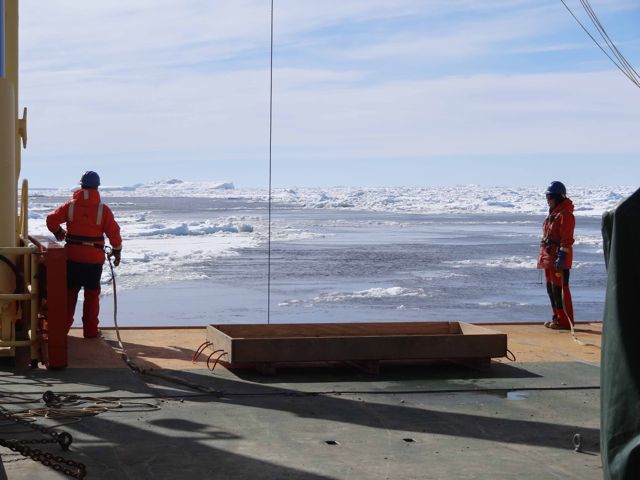
One of the new species we have found is a giant red ribbon worm (Phylum Nemertea), about 15 cm long when stretched out. This beast must be quite a predator. Its head is covered in 20 or more ocelli (eye spots; below picture) that it uses to detect changes in light levels as prey passes. It also has at least 20 chemosensory grooves along its neck for smelling and locating prey! When it does find something good to eat, a special organ (the proboscis), which is covered in small daggers and sticky gland cells, is everted at high speeds to stab and immobilize prey with paralytic toxins. The prey, usually a polychaete or crustacean, becomes ensnared and is drawn paralyzed into the mouth of the ribbon worm to be swallowed whole. I’m simultaneously intrigued and contented knowing that these interactions belie the calmness we experience above the water line.
Contributed by: Megan Schwartz, Natural History Museum, London

Last updated: 11/12/2013
